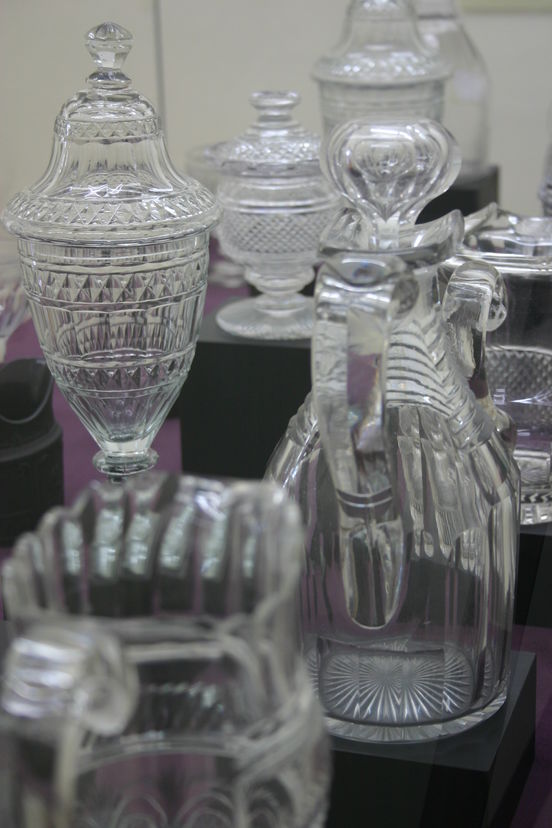The black bodied porcelain created by Joshua Wedgwood - Basalt ware - in the 1770's was inspired by the Etruscan black wares being excavated at Etruria in Italy. Wedgwood's Basalt ware was received with enthusiasm by the affluent upper and merchant classes and became so popular that over 170 other factories imitated it. But it is hard to see how its popularity for everyday use would have been long lasting once the novelty factor had worn thin: it would seem to be more suited to use during bereavements.
Whatever the case, the eighteenth century was one of England's greatest periods in regard to elegant design, and if today we look askance at eating and drinking off black tableware, we cannot help admiring the visual appeal of Wedgwood's Basalt ware. The forms are all greatly influenced by designer Robert Adam's appropriation of forms from antiquity, and the same classical forms can be easily recognized in eighteenth century English silver and silver plate as well as ceramics. This little collection is only of cream jugs and a coffee pot but all manner of tableware was manufactured in the same body. It is very hard to find early examples in New Zealand.
Georgian glass too exhibits the elegant designs proliferating in eighteenth century England. With the advent of the cutting wheel, the Georgian glass makers of Ireland and England produced hand cut faceted glassware that has never been surpassed. This glassware was not just decorative like the overly fussy wares of the following century. Hand cut faceted glassware helped illuminate interiors because dining tables and surrounds were lit by candle light. Faceted glassware reflected candle light and made light dance in dim interiors. The Basalt ware and glassware exhibited here are all from the late eighteenth and early to mid nineteenth centuries.
I occasionally use the small whisky glasses and matching water jug, and when I do, I like to picture them being carried on a small silver salver bearing the precious amber liquor for the pleasure of two famous Georgian figures - Lord Nelson and the Duke of Wellington - as they discuss the problem of Napoleon Bonaparte.
- Peter Webb
